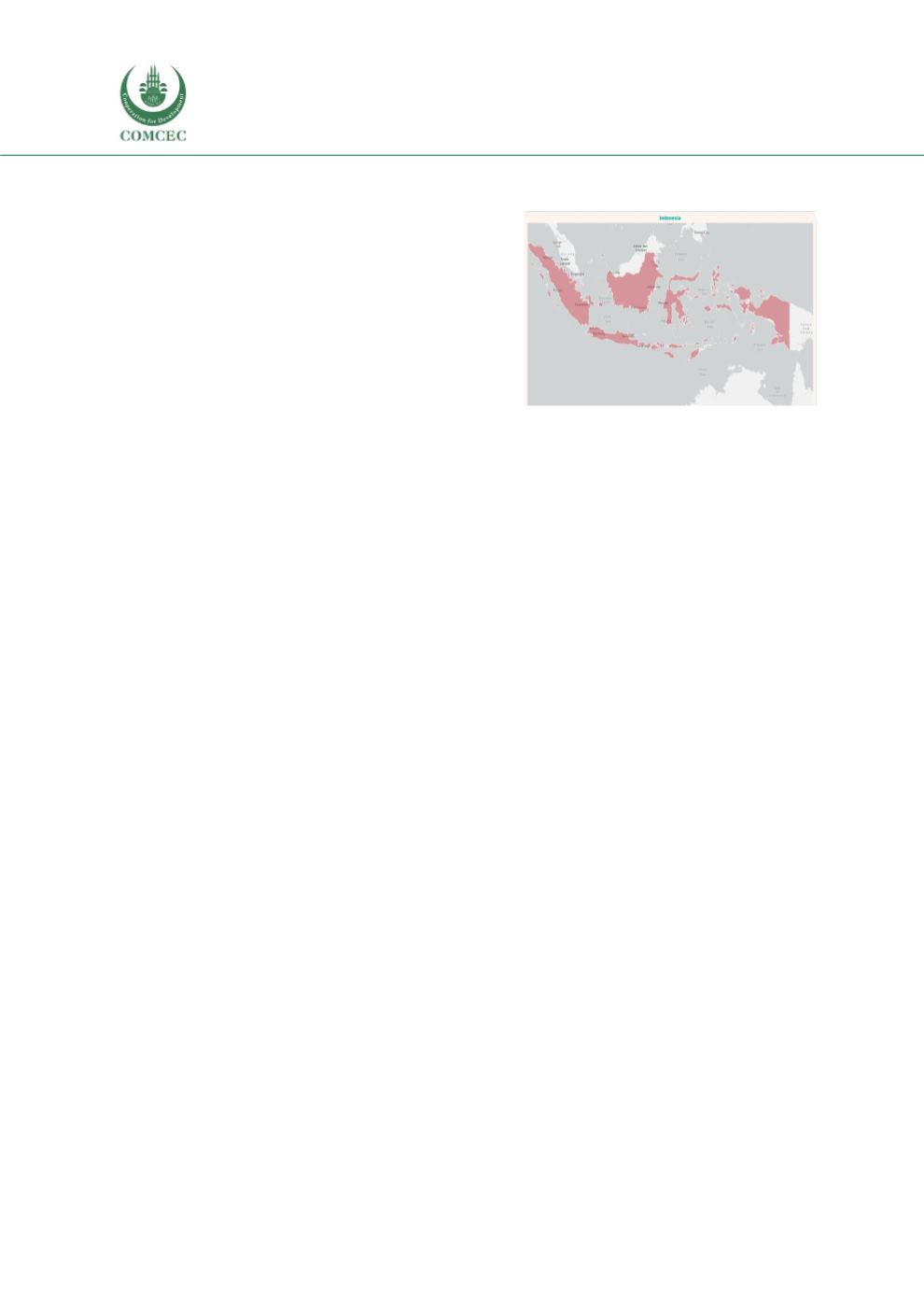

Child and Maternal Mortality
in Islamic Countries
84
3.2. Indonesia
Indonesia has made remarkable progress in
improving economic, social, and many health
indicators in recent years: the gross domestic product
increased from US $440 billion to $970 billion
between 1990 and 2015, with almost 5% annual
growth rate; the female literacy rate reached 98%;
53
contraceptive use increased from 49% in early 1990
to 62%by 2015;
54,55
and skilled birth attendance more
than doubled to 83% in 2012 from the early 1990
period.
53
The total fertility rate reduced from 5.57 to
2.45 between 1970 and 2015.
56
And, the poverty level
($1.90 per day) reached an all-time low of 6.8% in
2016.
57
It was expected that rapid social and economic developments and improvement in health care
practices in Indonesia would have also reduced maternal mortality substantially. However, the
recent estimated MMR of 305 maternal deaths per 100,000 live births from the SUPAS 2015 data
suggests that Indonesia has one of the highest maternal mortality ratios in Southeast Asia;
58
and
Indonesia is one of the 10 countries that contribute to almost 59% of the global maternal
mortality burden.
59
Model-based maternal mortality estimate by WHO/MMEIG, which relies on
national GDP, skilled birth attendant and general fertility rate (GFR), shows much lower MMR
which is likely misleading. The Indonesia Demographic and Health Surveys conducted in 1997
and 2012 estimated MMR of 334 and 359 maternal deaths per 100,000 live births, respectively,
which suggests that maternal mortality has not decreased over 15 years.
During the same period, neonatal mortality—deaths in the first 28 days after birth, which is
often attributed directly to maternal perinatal conditions and childbirth management—also
remained almost stagnated in Indonesia. The neonatal mortality rate decreased only 14%, from
22 to 19 deaths per 1,000 live births between 1997 and 2012, compared to a much larger
reduction in post-neonatal mortality (deaths between 28 days to 12 months after birth) rate,
which decreased by almost half from 24 to 13 deaths per 1,000 live births.
42
Poor obstetrical
care is considered to be one of the major determinants of high maternal and neonatal mortality
in Indonesia.
60
The country is an example that economic growth does not automatically translate
into low rates of maternal and newborn deaths.
Findings from the Population Census 2010 (SP2010) suggests that 70.5% of maternal deaths
occurred in health facilities.
61
Several studies have suggested poor quality of maternal care at
health facilities in Indonesia contributes to high maternal mortality.
62-64
A study in Papua
province in Indonesia suggests poor quality and delays in receiving appropriate care at facilities
are the major causes of maternal mortality.
65
The country is the fourth most populous country in the world with 257.6 million people living
in more than 13,000 islands covering about 735,400 square miles. Inequity in maternal care and
inaccessibility to high-quality care are still prevalent in the country. Considering the country's
contribution to global maternal and child mortality, we are proposing Indonesia as a case study
country.
Created with Microsoft BI
















